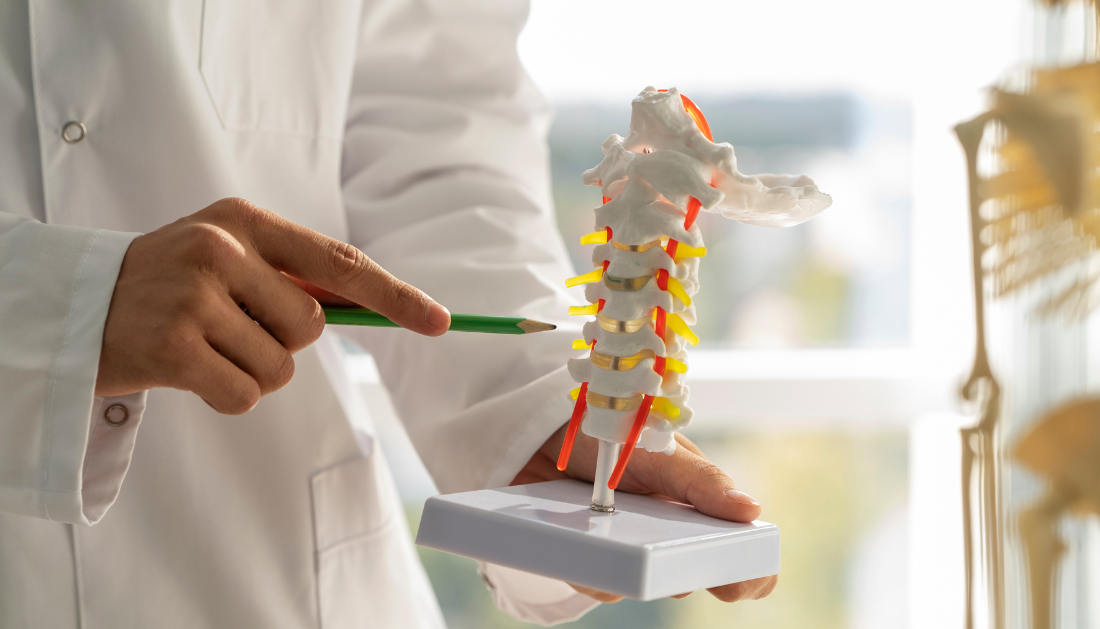

Despite being on a high-calorie diet in the intensive care unit, patients with spinal cord damage – acute spinal cord injury (SCI) lose body weight and muscle mass. Their muscular atrophy is severe, going beyond what can be explained by inactivity or denervation (loss of nerve supply).
The Ohio State University Wexner Medical Center and College of Medicine led a study published in the journal Science Translational Medicine that throws new light and decodes early muscle loss after SCI, providing an unprecedented first knowledge that muscle wasting is:
swift and severe
a glucocorticoid-dependent systemic phenomena
The severity of this SCI-induced systemic muscle wasting is determined by the site of the spinal cord damage (lesion level), according to the researchers. It is more exact if the adrenal gland is denervated after high thoracic damage (above T5) or not (after low thoracic injury).
These results have immediate clinical implications.
“Patients with a low BMI have a much higher risk of dying shortly after sustaining a spinal cord injury.” We hope to explore new ways to reduce deaths in this vulnerable patient population with a better understanding of this muscle wasting and aggravated weight loss,” said Jan Schwab, MD, PHD, the William E. Hunt & Charlotte M. Curtis Chair and a professor of neurology and neurosciences at the Ohio State College of Medicine.
Researchers discovered that systemic muscle loss is exacerbated when the adrenal glands lose control of the central nervous system, resulting in a skewed hormonal (endocrine) tone. When this occurs, hypercortisolism (excess cortisol release) frequently follows the spinal cord damage.
“This hypercortisolism then acts on specific receptors in muscle throughout the body, causing muscle loss.” Interfering with this pathway could save muscle tissue and improve rehabilitation response,” said first author Markus Harrigan, a member of Schwab’s research lab and the dual-degree MD-Ph.D. Medical Scientist Training Program at Ohio State, as well as a Ruth L. Kirschstein Individual NIH-Research Fellow.
This study also provides fresh insights on how to maintain muscle integrity while lowering the chance of developing higher degree pressure ulcers, which are common in these individuals, according to Harrigan. The study expands on prior Ohio State studies into the effects of SCI on the immune system, which impair immunological function, increase infection susceptibility, and contribute to infectious complications.
“We are now beginning to understand how a spinal cord injury leads to spinal cord disease that affects the entire body,” said Schwab, who is also the medical director of the Belford Center for Spinal Cord Injury and an Ohio State Scholar in the Chronic Brain Injury Initiative. “Our future research will search for ways to block these complications and protect the adrenal gland from receiving ‘false’ autonomic nervous system information originating from the spinal cord below the lesion site.”
Scientists at Ohio State worked with researchers in Berlin, Germany, as well as Nationwide Children’s Hospital in Columbus, Ohio, and the University of Missouri.
more recommended stories
 Colorectal Cancer Screening Rates Low in Adults 45–49
Colorectal Cancer Screening Rates Low in Adults 45–49Recent UCLA research reveals that colorectal.
 Gut Immune Cells and Long-Lasting Antiviral Protection.
Gut Immune Cells and Long-Lasting Antiviral Protection.Breakthrough Findings on How Gut Immune.
 Mild Pancreatic Duct Dilatation Signals Higher Cancer Risk
Mild Pancreatic Duct Dilatation Signals Higher Cancer RiskEarly Structural Changes Offer Critical Clues.
 How the Uterus Senses Force During Labor: New Insights
How the Uterus Senses Force During Labor: New InsightsA new study published in Science.
 Fat-Free Mass and Brain Outcomes in Preterm Babies
Fat-Free Mass and Brain Outcomes in Preterm BabiesEarly Fat-Free Mass May Hold the.
 How Hormones Shape Dopamine-Driven Learning
How Hormones Shape Dopamine-Driven LearningNYU Study on Hormones and Cognitive.
 Protein Pair Guides Chromosome Alignment in Mitosis
Protein Pair Guides Chromosome Alignment in MitosisKey Points A joint research team.
 Intensive mind-body retreat rapidly alters brain function
Intensive mind-body retreat rapidly alters brain functionAn intensive mind-body retreat combining meditation,.
 Citrus and Grape Compounds Help Prevent Type 2 Diabetes
Citrus and Grape Compounds Help Prevent Type 2 DiabetesA new clinical trial highlights the.
 Personalized Pain Care Transforms Parkinson’s Treatment
Personalized Pain Care Transforms Parkinson’s TreatmentNew UniSA research underscores the urgent.

Leave a Comment